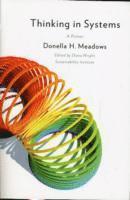Summary of Systems Principles
Systems • A system is more than the sum of its parts. • Many of the interconnections in systems operate through the flow of information. • The least obvious part of the system, its function or purpose, is often the most crucial determinant of the system’s behavior. • System structure is the source of system behavior. System behavior reveals itself as a series of events over time. (View Highlight)
Stocks, Flows, and Dynamic Equilibrium
A stock is the memory of the history of changing flows within the system. • If the sum of inflows exceeds the sum of outflows, the stock level will rise. • If the sum of outflows exceeds the sum of inflows, the stock level will fall. • If the sum of outflows equals the sum of inflows, the stock level will not change — it will be held in dynamic equilibrium. (View Highlight)
A stock can be increased by decreasing its outflow rate as well as by increasing its inflow rate. • Stocks act as delays or buffers or shock absorbers in systems. • Stocks allow inflows and outflows to be de-coupled and independent. (View Highlight)
Feedback Loops
• A feedback loop is a closed chain of causal connections from a stock, through a set of decisions or rules or physical laws or actions that are dependent on the level of the stock, and back again through a flow to change the stock. (View Highlight)
Balancing feedback loops are equilibrating or goal-seeking structures in systems and are both sources of stability and sources of resistance to change. (View Highlight)
Reinforcing feedback loops are self-enhancing, leading to exponential growth or to runaway collapses over time. (View Highlight)
The information delivered by a feedback loop—even nonphysical feedback—can affect only future behavior; it can’t deliver a signal fast enough to correct behavior that drove the current feedback. (View Highlight)
A stock-maintaining balancing feedback loop must have its goal set appropriately to compensate for draining or inflowing processes that affect that stock. Otherwise, the feedback process will fall short of or exceed the target for the stock. (View Highlight)
Systems with similar feedback structures produce similar dynamic behaviors. (View Highlight)
